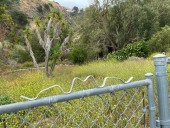
 4
4




 7
7




"The rule of no realm is mine. But all worthy things that are in peril as the world now stands, these are my care. And for my part, I shall not wholly fail in my task if anything that passes through this night can still grow fairer or bear fruit and flower again in days to come. For I too am a steward. Did you not know?" Gandolf
 3
3




Walk it daily, and get a sense for the topography, the slope, the soil, hydrology, moisture, etc.
Invasive plants are Earth's way of insisting we notice her medicines. Stephen Herrod Buhner
Everyone learns what works by learning what doesn't work. Stephen Herrod Buhner
 10
10




 6
6




To be is to do …Kant
To do is to be ..Nietzsche
Do be do be do…Sinatra
The fresh salads continued into Feb of 2021 when we got hit with a cold snap.
 1
1




To be is to do …Kant
To do is to be ..Nietzsche
Do be do be do…Sinatra
 2
2




 11
11




A build too cool to miss:Mike's GreenhouseA great example:Joseph's Garden
All the soil info you'll ever need:
Redhawk's excellent soil-building series





 5
5




 7
7




Lorinne Anderson: Specializing in sick, injured, orphaned and problem wildlife for over 20 years.




 2
2




 2
2




Lorinne Anderson: Specializing in sick, injured, orphaned and problem wildlife for over 20 years.
 4
4




Tinamarie Maison wrote:I’m really not sure how to make the acre marshland into a harmonious feature!
 Can you dig it out and transform it into another pond? There are a ton of possibilities and some of them might just become a really fun adventure.
Can you dig it out and transform it into another pond? There are a ton of possibilities and some of them might just become a really fun adventure.
 3
3




Paul said "They don't always have to stay in place and some can be altered and transformed.
Invasive plants are Earth's way of insisting we notice her medicines. Stephen Herrod Buhner
Everyone learns what works by learning what doesn't work. Stephen Herrod Buhner
 1
1




Paul Eusey wrote:
Tinamarie Maison wrote:I’m really not sure how to make the acre marshland into a harmonious feature!
Lots of good advice thus far and I figured I would give you some thoughts on yer marsh quandary. I haven't seen your particular marsh, but marshes that I have seen have basically been water stuck in place or places where water collects enough to be a marsh, but not enough to be a pond. They don't always have to stay in place and some can be altered and transformed.
"The rule of no realm is mine. But all worthy things that are in peril as the world now stands, these are my care. And for my part, I shall not wholly fail in my task if anything that passes through this night can still grow fairer or bear fruit and flower again in days to come. For I too am a steward. Did you not know?" Gandolf





|
This is my favorite tiny ad:
permaculture bootcamp - gardening gardeners; grow the food you eat and build your own home
https://permies.com/wiki/bootcamp
|




